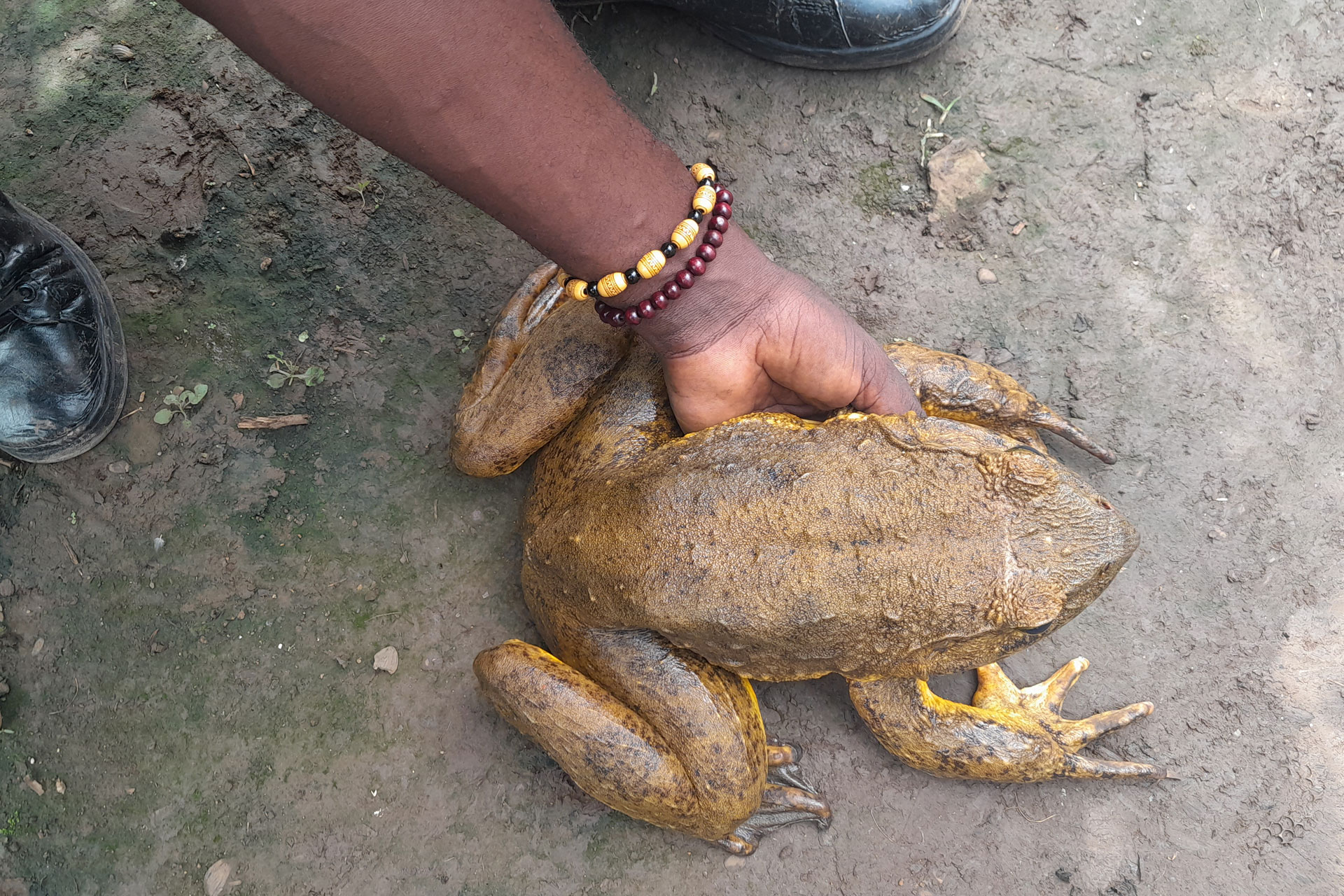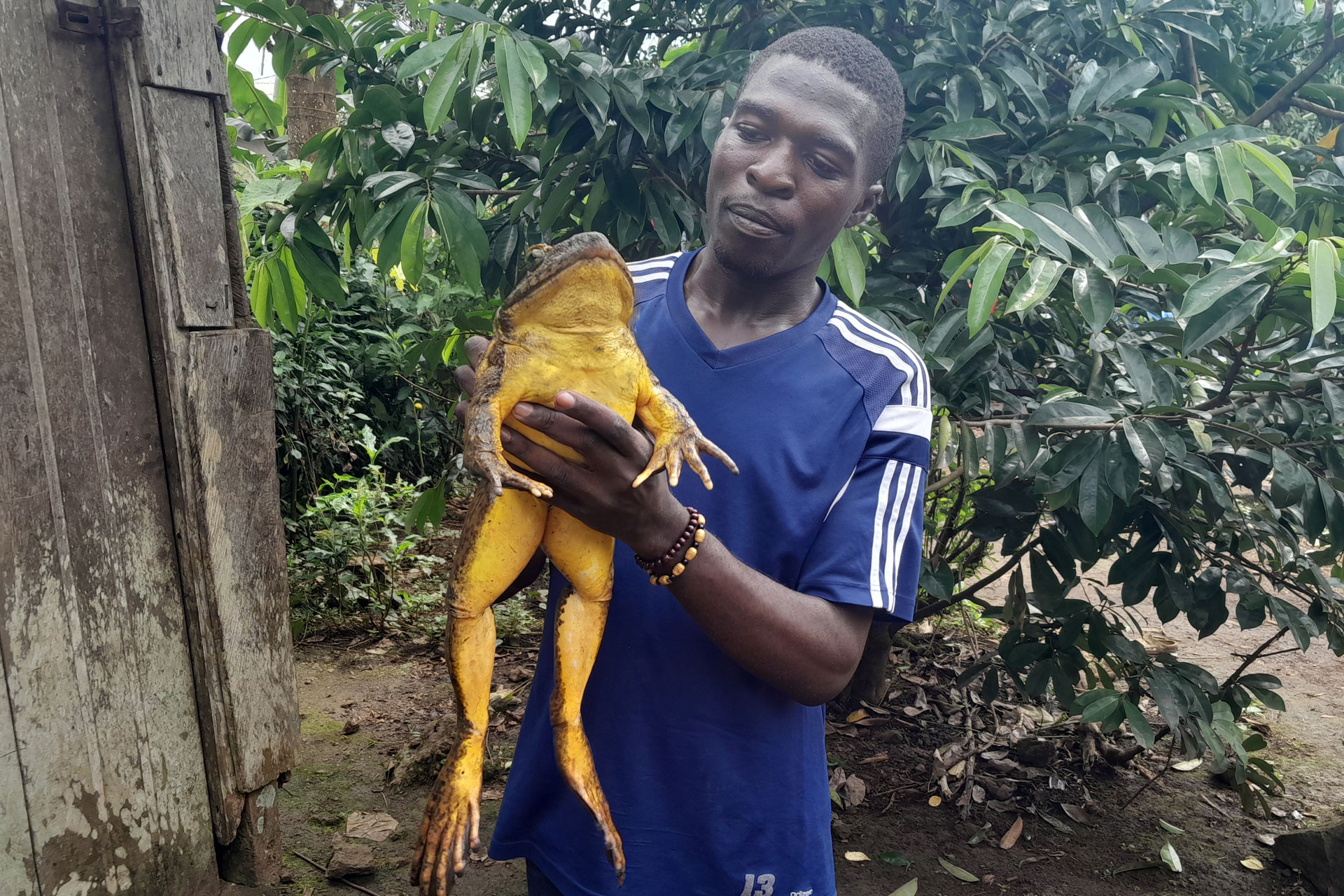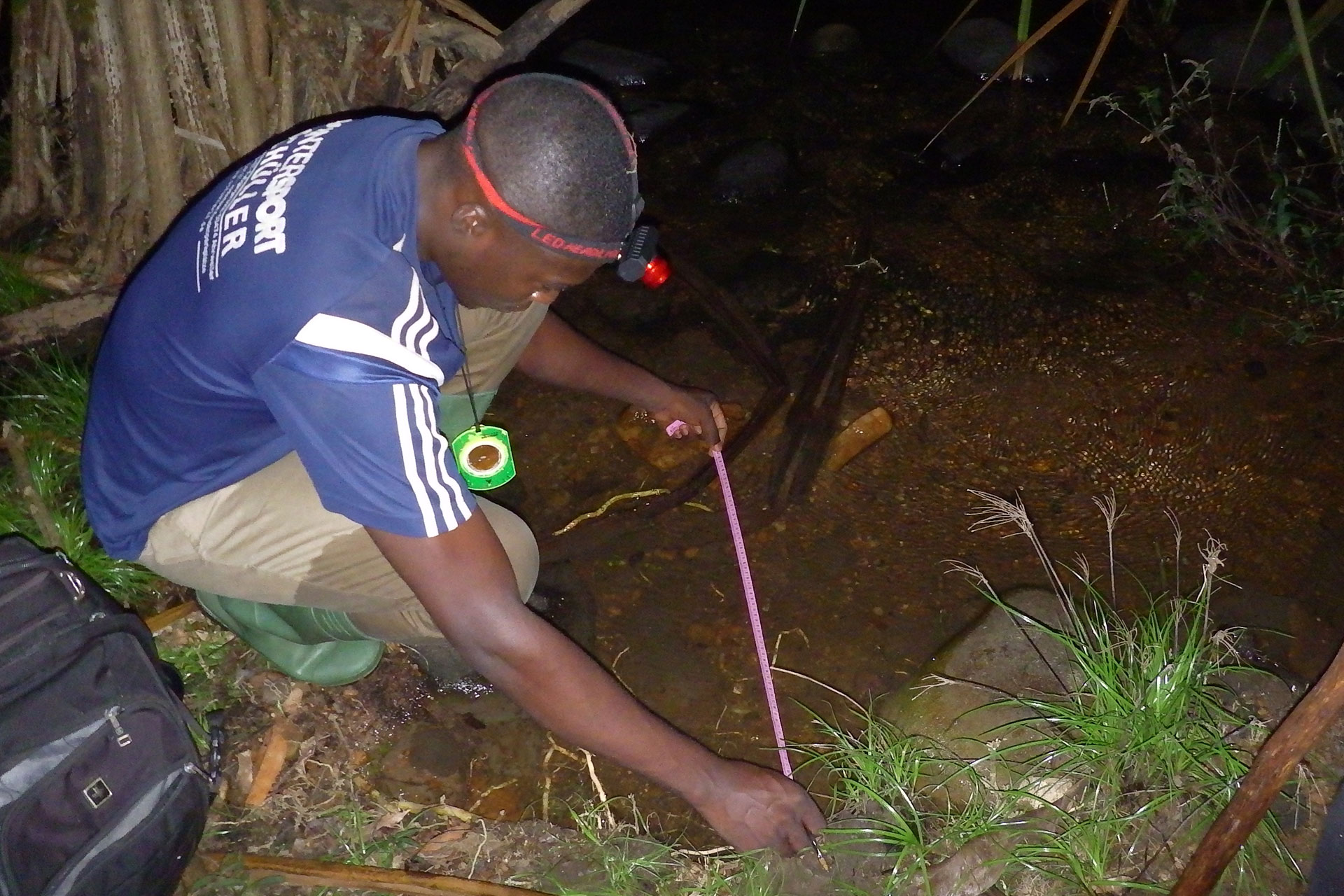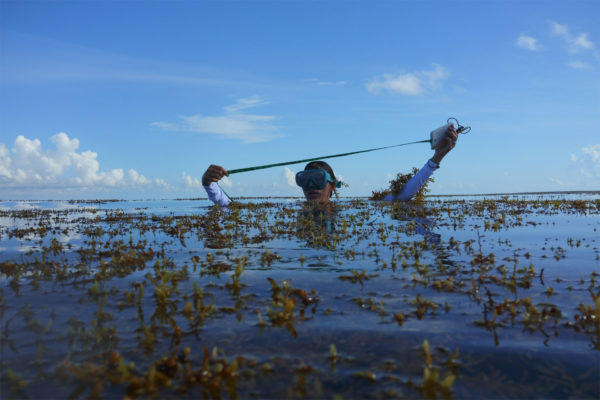Goliath Frog: Finding Space For The Largest Frog On Earth
By
2 years ago
A frog the size of an infant is currently being saved in Cameroon

Meet the Goliath frog – the largest frog on earth, and an endangered species. But the tide is turning in regards to the threat on this amphibian, thanks to the conservation efforts of the Conservation Leadership Programme in Cameroon.
It’s not all doom and gloom – if you’re looking for good news, read our positive stories section.
Meet The Goliath Frog, An Endangered Species
A Pressured Population
It’s December 2022 and for the first time in years, local conservationists from Cameroon have found a new riverside nesting site for the Goliath frog.
‘The river by Mount Nlonako Reserve had been known to host the Goliath frog, but it was previously a long time ago,’ says Cedrick Fogwan Nguedia, who is the local lead on the Conservation Leadership Programme, part of an award-winning partnership between Fauna & Flora and other conservation groups, aiming to turnaround a steady decline in the population of this giant frog.
The goliath frog – the largest living frog species, often growing to three kilos (or ‘the size and weight of a baby’, I’m told) – has faced population pressure across its homes in Equatorial Guinea and Cameroon. In particular, habitat destruction and hunting have knocked its numbers by 70 percent across the past 15 years.
But hope is not lost.
‘This year, our work allowed me to hold one of these frogs for the first time in September’, says Cedrick.

Cedrick holds the Goliath frog
Local Education
Their work has largely been in spreading information locally, sensitising people to the plight of the Goliath frog. Most people in the villages and towns near these nesting sites in south-west Cameroon are not aware initially that this frog is under severe pressure. Rather, they’ve viewed it as a food source for many years – and are surprised to be told that the numbers are dwindling.
The Goliath frog Cedrick held was a direct testament to what their work in local education had achieved. A call from a former poacher was a watershed moment; having been on the end of the Conservation Leadership team’s sensitivity training, he spotted a neighbour who had caught a frog – and was ready to kill and eat the creature. This call asked them to come and talk to the neighbour and hopefully release the amphibian back to nature. It succeeded – and thus Cedrick held the very creature he’d been working for months to protect for the first time.
The work hasn’t been without challenge – given that the animal is a source of local food, part of the Conservation Leadership team’s work has been in providing different sources of sustenance. However, they’ve seen success in this. They’ve spent the past few months up-skilling local groups in snail farming, which has significantly alleviated the pressure of poaching.
Success

The team have found evidence of returning nests
The numbers are beginning to look up thanks to local and targeted efforts. The Goliath frog has finally returned to the Mount Nlonako Reserve and its rivers.
And why save the Goliath frog, I ask Cedrick.
Simply: ‘It made me so, so happy to find out an amphibian could be this big; and, in turn, so, so sad to hear that people were eating it!’.
Find out more at conservationleadershipprogramme.org.






